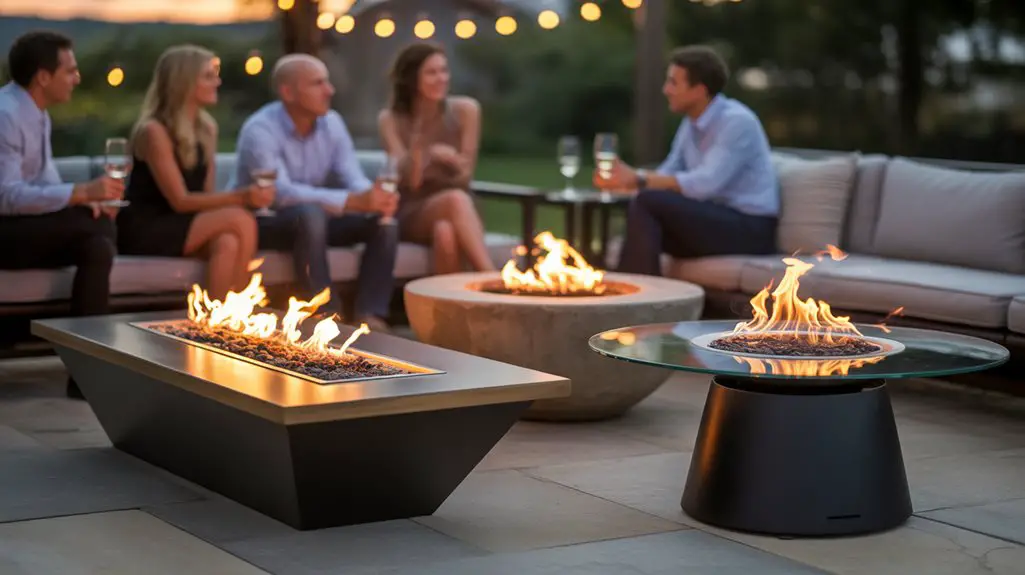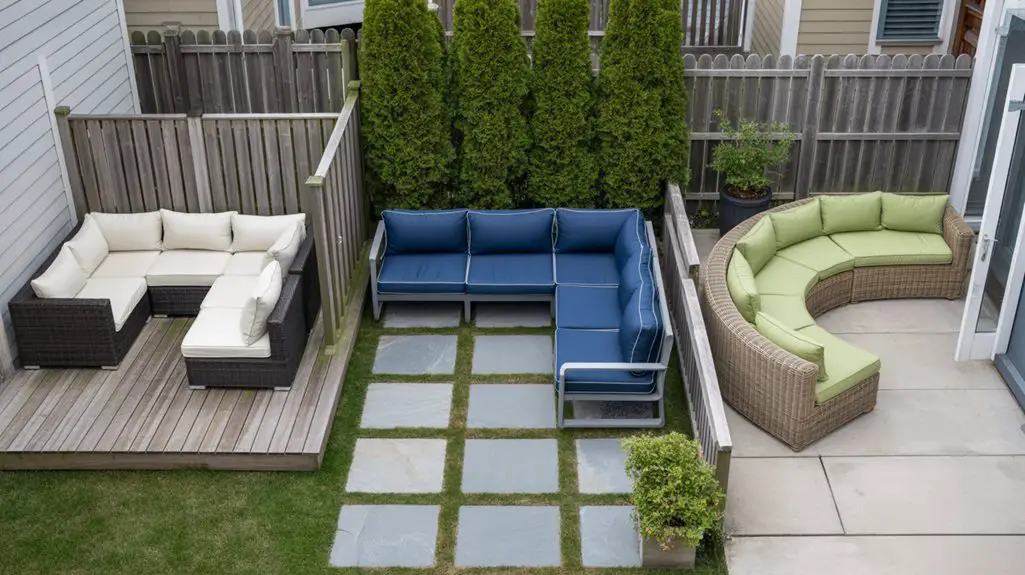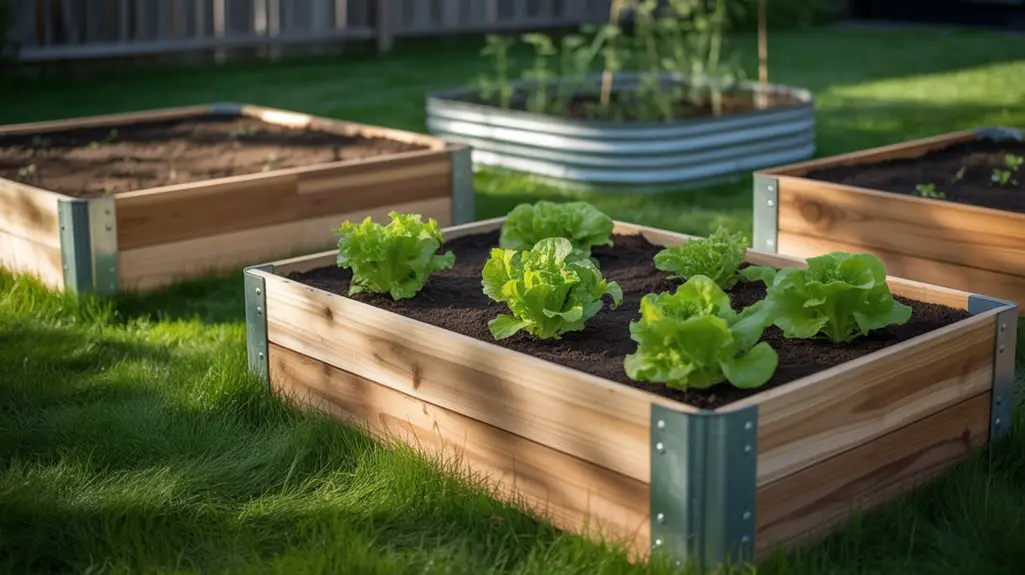Traditional landscapes demand over 70 hours of annual maintenance while offering minimal resilience to your pet’s natural behaviors. You’re juggling work, family, and pet care already—your yard shouldn’t add to this burden. By integrating purposeful hardscaping, durable ground covers, and strategic plant selection, you’ll create a functional outdoor space that withstands paw traffic while requiring minimal upkeep. The question isn’t whether you can afford a low-maintenance yard; it’s whether you can afford not to have one.
The Health Benefits of Pet-Safe Landscaping Choices
While creating a beautiful yard is a worthy goal, establishing one that promotes your pet’s health should be your primary concern.
Pet-safe landscaping eliminates toxic plants like lilies, azaleas, and sago palms that can cause severe reactions or death if ingested. Strategic design minimizes parasitic infestations by reducing standing water and incorporating cedar mulch to repel ticks and fleas.
You’ll also benefit from choosing hardy, urine-resistant grasses like Kentucky bluegrass or Bermuda grass that withstand pet traffic while preventing mud tracking.
Non-toxic, organic fertilizers eliminate chemical exposure that can lead to respiratory issues and skin irritation.
Consider installing designated digging zones with sand or loose soil to satisfy natural behaviors while protecting your garden beds.
These intentional choices create a harmonious outdoor space where both aesthetic appeal and pet wellness coexist. Additionally, incorporating creative landscaping ideas can enhance the overall functionality and enjoyment of your pet-friendly yard.
Durable Ground Covers That Withstand Paw Traffic

When selecting ground covers for pet-frequented areas, durability becomes your primary consideration. You’ll need materials that resist compaction, recover quickly from traffic patterns, and maintain visual integrity despite repeated use.
| Ground Cover | Durability Rating | Maintenance Level |
|---|---|---|
| Clover | High | Minimal |
| Buffalo Grass | Very High | Low |
| Micro-Clover | Medium-High | Minimal |
For high-traffic zones, consider installing flagstone pathways with creeping thyme between pavers—this combination withstands regular paw traffic while providing sensory interest. Synthetic turf offers another technical solution, featuring advanced drainage systems and antimicrobial treatments specifically designed for pet areas. Select varieties with shorter blades (1.5-2 inches) for peak cleanliness and reduced bacterial proliferation. Additionally, incorporating pet-friendly landscaping options can enhance the overall functionality and aesthetics of your backyard space.
Natural Alternatives to Chemical Lawn Treatments

Maintaining a pet-safe outdoor environment requires eliminating conventional chemical treatments that may harm your four-legged companions through direct contact or accidental ingestion.
Instead, deploy strategic biological agents such as beneficial nematodes to combat soil-dwelling pests without toxic residues.
For weed management, integrate targeted mechanical extraction tools rather than broad-spectrum herbicides.
You’ll achieve ideal results by applying corn gluten meal as a pre-emergent barrier during key seasonal changes. This creates an inhospitable germination zone while adding nitrogen to your soil matrix.
When fungal issues arise, utilize compost tea applications at 10:1 dilution ratios to establish competitive microbial colonies.
For insect control, introduce neem oil emulsions (1 tablespoon per gallon) during low-UV periods to maximize efficacy without compromising pet safety zones or critical pollinator activity. Additionally, consider natural pest control methods such as introducing beneficial insects that help reduce pest populations naturally.
Time-Saving Yard Features for Busy Pet Owners
Beyond natural treatments, the physical structure of your yard can dramatically reduce maintenance requirements while enhancing your pet’s experience.
Consider installing permeable pavers that allow drainage while preventing muddy paws. These create defined pathways that direct pet traffic and minimize lawn wear.
Implement designated play zones with decomposed granite or pet-friendly artificial turf—both require minimal upkeep and resist digging. You’ll find that strategic hardscaping reduces mowing requirements by up to 40%.
For water conservation, install drip irrigation systems on timers that precisely target plants while keeping pets dry.
Incorporate raised garden beds with pet-deterrent borders to keep your four-legged friends from accessing delicate plantings.
Finally, select weatherproof, chew-resistant outdoor storage units to keep pet toys organized and your yard clutter-free.
Additionally, consider modern outdoor seating designs that blend style and functionality, providing a perfect place for you and your pets to relax in the yard.
Water-Efficient Designs That Keep Pets Cool and Comfortable
While summer temperatures soar, water-efficient yard designs can simultaneously conserve resources and provide essential cooling for your pets. Consider installing a recirculating water feature that requires minimal refilling while offering a revitalizing drinking source. Strategic shade placement through drought-resistant trees creates cool retreats without excessive irrigation demands. Incorporate permeable hardscaping that allows rainwater to penetrate soil rather than creating runoff. These surfaces remain cooler than concrete, protecting sensitive paw pads. You’ll optimize spatial efficiency by integrating a shallow splash pool (3-4 inches deep) in a corner location that receives afternoon shade. For maximum water conservation, install a rainwater collection system connected to misters that activate during peak heat hours. This targeted cooling approach delivers comfort precisely when and where your pets need it most. Additionally, utilizing eco-friendly choices in your yard can enhance both your pet’s environment and the surrounding ecosystem.
Creating Designated Pet Play and Potty Areas
Creating distinct zones for pet activities transforms your yard into a functional space that balances your landscaping vision with your pet’s natural behaviors.
Designate specific areas for play, rest, and elimination to minimize damage to your prized plantings while accommodating your pet’s instinctual needs.
- Install permeable gravel or mulch in potty zones for superior drainage and odor control
- Define play areas with durable, pet-safe ground covers like clover or buffalo grass
- Border designated zones with decorative rocks or low fencing for visual definition
- Include shaded rest spots with weather-resistant pet furniture
- Position activity zones away from delicate plants and garden features
This strategic zoning approach reduces maintenance time and preserves your landscape’s aesthetic integrity, while providing your pets with appropriate outlets for exercise and bathroom needs. Additionally, incorporating designated play areas enhances your pets’ overall well-being by promoting exercise and socialization.
Seasonal Considerations for Year-Round Pet-Friendly Yards
Seasonal changes require thoughtful adaptations to maintain a pet-friendly yard that remains functional and safe throughout the year. You’ll need to rotate plants, adjust ground covers, and modify protective elements as temperatures fluctuate. Creating a backyard stage for entertainment purposes can also enhance your outdoor space while ensuring it remains pet-friendly.
| Season | Priority Concerns | Recommended Adaptations |
|---|---|---|
| Spring | Mud management, toxic plants | Install gravel pathways, remove sprouting toxic species |
| Summer | Heat stress, water access | Provide shade structures, install pet-accessible water features |
| Fall | Leaf accumulation, wildlife | Implement regular raking schedule, secure compost bins |
| Winter | Ice hazards, cold exposure | Use pet-safe ice melt, create wind barriers around shelters |
Strategically select perennial ground covers that withstand seasonal shifts while maintaining structural integrity under paw traffic. Your year-round design should incorporate flexible zones that can be modified without complete renovation as seasons change.
Conclusion
Your pet-friendly yard isn’t just a space—it’s a sanctuary where design meets function. Like a well-balanced ecosystem, each element serves both you and your companion. You’ll find freedom in the strategic harmony of durable surfaces, non-toxic plantings, and zoned areas that optimize maintenance while maximizing enjoyment. As seasons change, your thoughtfully engineered outdoor space remains the constant bridge between your home’s architecture and your pet’s natural instincts.




